The 12 Best Vampire Movies Of All Time
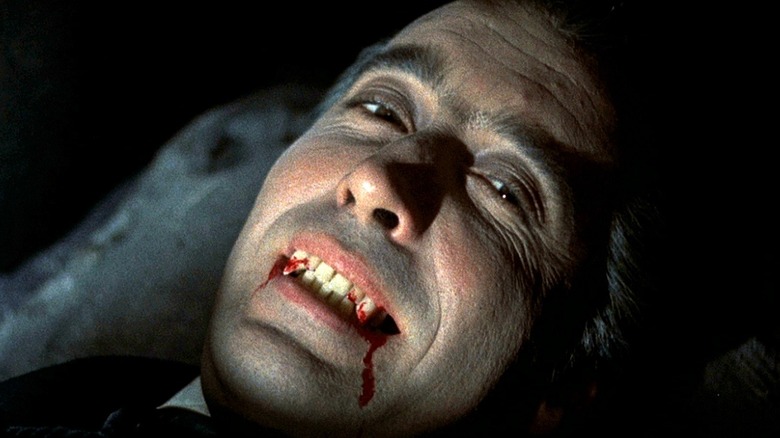
Every culture has its own flavor of the vampire myth, from the Icelandic "draugur" -- corporeal undead who guard their treasures -- to the Romani "mullo," or ghouls who feed on the blood of those who caused their demise. That considered, it's no surprise that the vampires in our cinema are as varied as the legends that spawned them.
On this list, we'll meet seductive space vampires, misguided vampire wannabes, and angst-ridden, cape-swishing romantics. We'll encounter undead skateboarding feminist icons, vampires who get their powers through bizarre biomechanical gadgetry, feral beasts stripped of their humanity, monsters well beyond any chance at redemption, cinema icons who paved the way for numerous, inferior imitators, and more, all in the 12 best vampire movies of all time.
So, as a certain highly regarded, felt-covered, altogether less sinister member of the vampire community might say, "One vampire movie, ha ha ha. Two vampire movies, ha ha ha..."
Nosferatu: A Symphony Of Horror
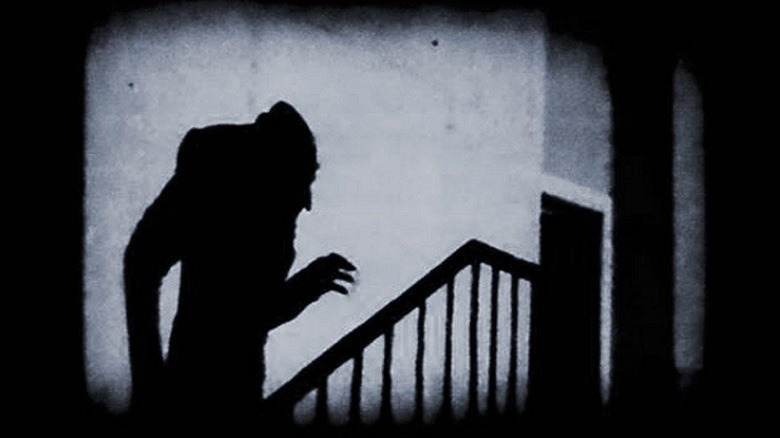
Emerging first from the shadows is Count Orlok, "The Bird of Death." He's the first vampire to make celluloid his home, and naturally must be first on this list of thirsty movie undead. Clearly based on Bram Stoker's "Dracula" (in terms of story, not appearance), Orlok possesses neither the physical characteristics nor the charm of his Transylvanian neighbor. Whereas Dracula can pass as a man, Nosferatu is more monstrous in visage. Pale skinned with a mouthful of vicious fangs, his fingers tipped with long raking claws, Orlok barely looks human. He's a baser creature than the Count, with his primary interests lying solely in feeding and killing.
"Nosferatu" is regarded as one of the defining films of German Expressionism. The iconic shot of Orlok ascending an intended victim's stairs is one of the most recognizable (and spoofed) images from the entire movement. The whole film is filled with striking imagery, though, in particular shot in which Orlok emerges from his coffin to stand bolt upright, a highlight that still chills even now.
Stoker's estate sued director F.W. Murnau because of the striking similarities between "Nosferatu" and Stoker's novel, and ordered all copies of the film destroyed. However, like any vampire worth his salt, Orlok lives on.
Horror Of Dracula: One Of The Originals, And Still One Of The Best
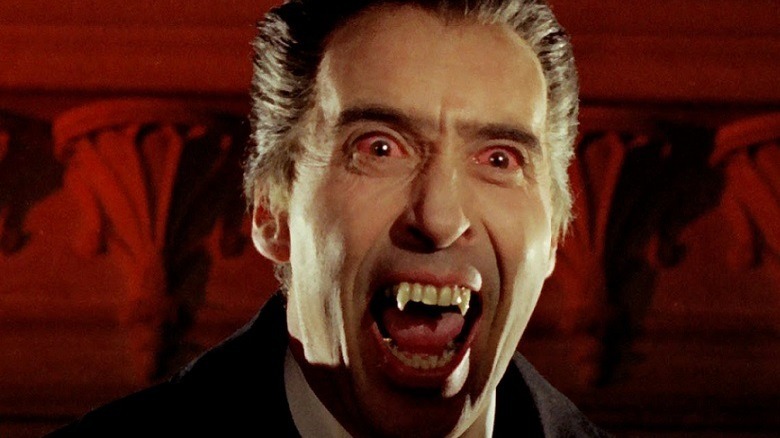
Having grown up on a diet of Hammer Studios movies in the '70s and '80s, it would be a sin for this Brit to not include at least one of them on this list, and "Dracula" ("Horror of Dracula" in the U.S.) is the first and best. Christopher Lee has the amazing talent of being able to completely inhabit any character he plays, be it Lord Summerisle in "The Wicker Man," Saruman in Peter Jackson's "Lord of the Rings" trilogy or, in this case, the dreaded Count Dracula himself.
Whereas Bela Lugosi had portrayed the prime vampire for Universal Studios three decades before and gave him a distinct European elegance, Lee's Dracula brought an alluring sexuality to the role. Here was a Dracula you wouldn't object to being bitten by, an immortal capable of gliding between a refined gentleman and a savage beast as effortlessly as a bat. This Dracula was seductive and mysterious, and in Lee, a dominating physical presence. The genius of this adaption, though, is the casting of Van Helsing. When you have an actor as powerful as Lee on the screen, only an actor like Peter Cushing makes a convincing match.
Lee would reprise the role of the Count six more times over his career, but each film was lesser than the last, draining the very last drops of lifeblood from an increasingly watered-down franchise.
Martin: A Study Of Evil
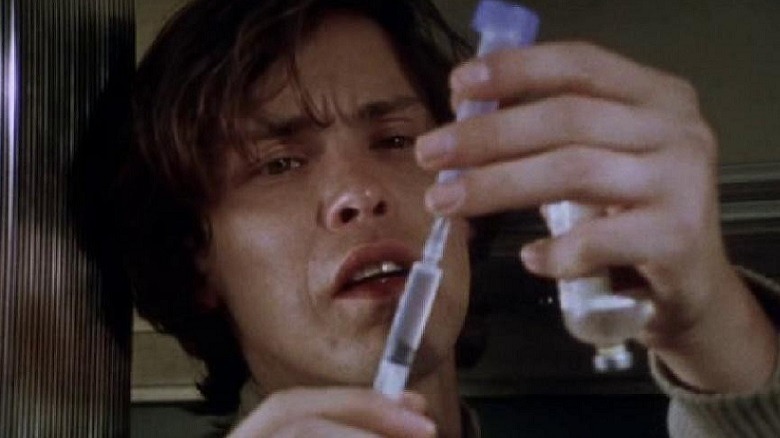
It's easy to forget that George A. Romero had more to offer the world of horror than just his Trilogy of the Dead, and the oft-forgotten "Martin" is a reminder of the man's talent at both writing and directing.
"Martin" tells the tale of Martin Mathias, a young and troubled man who believes himself to be a vampire. Opening on Martin onboard a sleeper train as he slices open the forearm of a sedated woman and drinks her blood, it's a powerful and unforgettable introduction to the character.
Romero leaves Martin's true nature deliberately vague, with the audience left to decide whether he's a vampire or not. Martin has visions of torch-wielding mobs and assorted vampiric tropes, but it's unclear whether they're just delusions or his actual memories. "Martin" is full of religious allegory, and forces viewers to question whether the fantasies are Martin's fault, or that of those around him. Either way, it's a powerful movie that ends on a bleak and deliberately ambiguous note. It's often disregarded as part of Romero's oeuvre due to its thought-provoking nature and sedate pacing, but it's his strongest with regard to both narrative and visuals.
Lifeforce: They Came From Outer Space
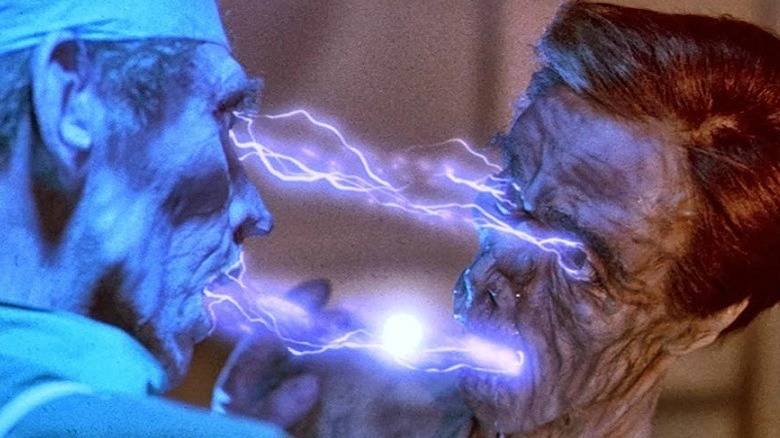
If the other films here could be classed as filet mignon (served rare and bloodied, obviously), director Tobe Hooper's "Life Force" is a fast food burger: disposable and flawed, but sometimes exactly what you're craving.
While, in real life, the only Brits who get to go to space are billionaires, in "Lifeforce" a joint U.S.-U.K. Space Mission encounters an alien craft containing three humanoids in suspended animation. Brought back to Earth, they reanimate and cause havoc -- and only one of the astronauts on that original mission can stop them.
An adaptation of Colin Wilson's subtly titled novel "The Space Vampires," "Lifeforce" is memorable for several reasons. Henry Mancini's rousing orchestral score is a standout, feeling like it belongs to the huge sprawling sci-fi epic that "Lifeforce" is trying to be, and some of the full-size animatronic work is truly exceptional. What most people will remember most from "Lifeforce," though, is Mathilda May as the lead female space vampire, who spends most of her screen time walking around naked. She's certainly a less subtle seducer than Dracula, and meets with more success during her brief time on Earth.
Like the aforementioned burger, "Lifeforce" is as cheesy as they come, but exceptional production values and an ambitious spirit make it feel like a lost Hammer "Quatermass" film.
Near Dark: The Desert Sands Run Red
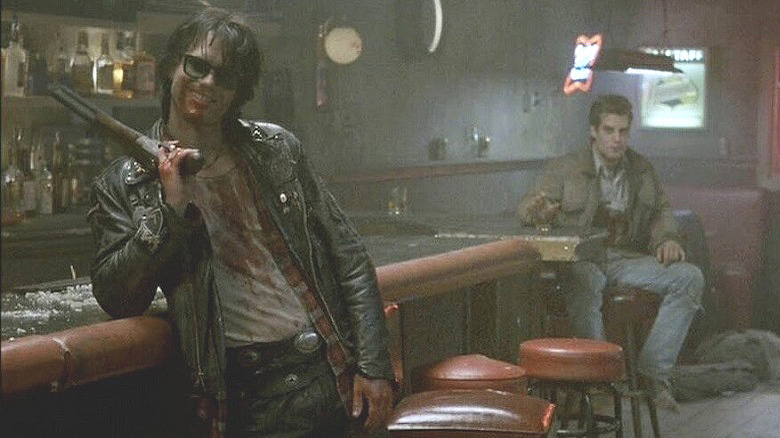
Historically, cinema had always had a certain reverence for vampires, taking a romanticized view of anguished souls cursed to walk amongst the shadows, forever denied the beauty of daylight. "Near Dark" was one of the first vampire movies to take that leather-bound rulebook and throw it into the fire. These aren't maudlin, eloquent, and elegantly dressed European vampires who bemoan their lot, but monsters who revel in their powers, lording their supremacy over mere mortals who they see as cattle.
"Near Dark" tells the tale of Caleb, a young guy in a small town who falls for -- and is bitten by -- attractive drifter Mae. Unfortunately, it turns out that Mae is a vampire, one of a vicious gang that travels from town to town, tearing through souls like a plague. Caleb's forced to earn their trust and learn the hard way how to live as a member of the undead.
"Near Dark" is part road movie, part Western, and part horror. The gang, led by 150-year-old Jesse Hooker (a never better Lance Henriksen, more cult leader than patriarch), are a force of nature. The vampires delight in their immortality and the powers it grants them, and are immune to the familiar trappings, like garlic and the cross. Only sunlight threatens them; in this Western, the sun acts as cavalry, dominating scenes of sun-drenched vistas.
Cronos: Undead And Loathing It
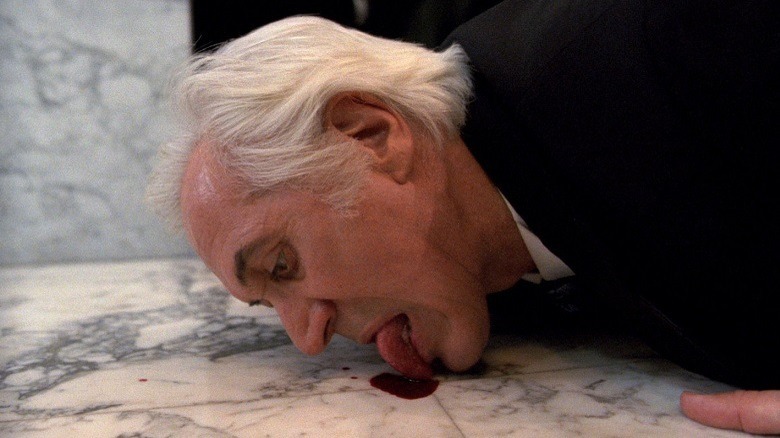
Even though it was his first full-length movie, "Cronos" made it apparent that Guillermo del Toro was a talent worth watching.
In this tale of resurrection and redemption, our hero (named "Jesus," in an unrefined allegory) is an antique dealer who comes across a half-a-millennia-old scarab-shaped mechanical device -- the Cronos of the title -- hidden inside a statue. The device latches onto Jesus, embedding itself inside him with a painful barb, and the old man is rejuvenated and granted endless life. However, this comes with a desperate thirst for blood. Jesus learns that others are searching for this device, also seeking the immortality that it can provide.
The first of two del Toro films on the list (and the first of two appearances by del Toro's muse and frequent collaborator, Ron Perlman), "Cronos," like the device itself, is a lost treasure. It's a wonderful subversion of vampire tropes, with immortality in this case passed on by bio-mechanical means; at the heart of "Cronos" is a beetle-like insect trapped inside a clockwork prison. As Jesus becomes increasingly vampiric, he becomes less human in both mind and appearance. It's an elegant work with early examples of del Toro's distinctive style, powerful performances, and a thought-provoking conclusion.
From Dusk Till Dawn: Last Fangs Saloon
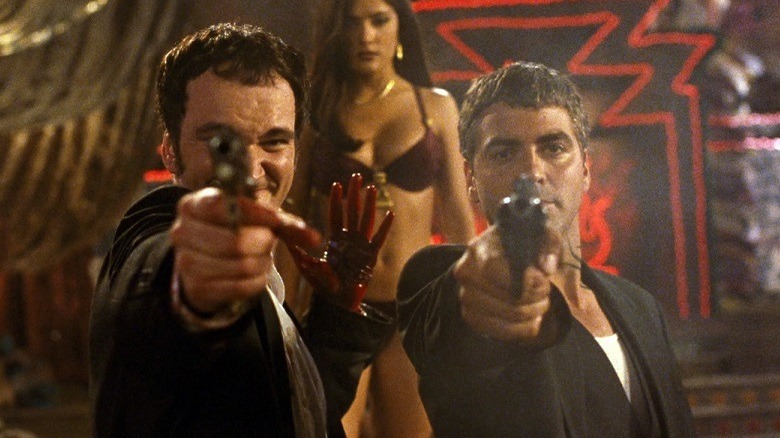
Because we live in an age in which even movie trailers have their own teasers, by the time an actual film hits theaters, you've already seen a good portion of it. Filmmakers don't hesitate to give everything away in advertising, even if they're revealing major plot twists or surprises.
So, imagine walking into a cinema in 1996 to see "From Dusk till Dawn." All that you know is that it stars that lovely George Clooney from "E.R." and is written by "Pulp Fiction" director Quentin Tarantino. Imagine your surprise when the movie pulls a perfect twist, turning that heist-cum-road-movie into a balls-to-the-wall vampire flick. That's a cinematic experience to rival the best of Shyamalan's twist endings.
"From Dusk till Dawn" sees two brothers and career criminals, Seth and Richie Gecko, kidnap a family to help them escape over the Mexico border. After arriving at the Titty Twister, a seedy desert inn where they hope to meet their contact, the siblings discover that the bar is a lair for frenzied vampires and are forced to fight for their lives alongside the bar's other patrons.
"From Dusk till Dawn" is an audacious piece of filmmaking, playing a trick it'd be impossible to pull off now. It also achieves the difficult feat of making an unsympathetic character -- Clooney's Seth -- someone to root for, and features a whole host of horror stars, including genre legend Tom Savini, in supporting roles. It's a blast.
Blade 2: Do Fear The Reaper
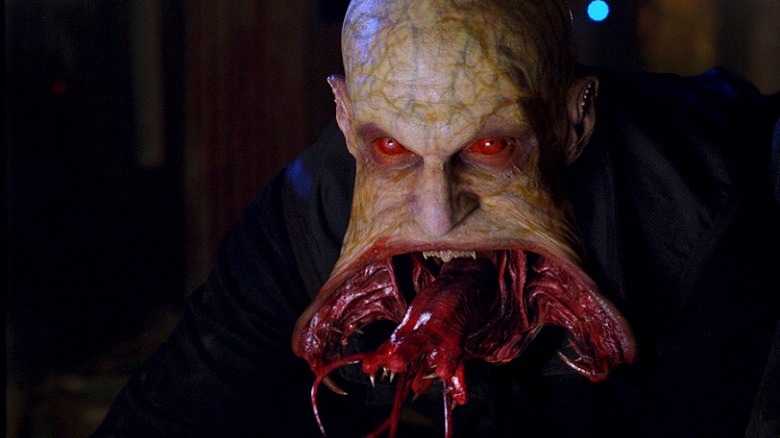
Deviating from the standard trope, in "Blade," the vampires lived among us. They were organized, occupied the highest positions in society, and existed as an entirely separate community with their own hierarchy, laws, and rules. That's all established in the original movie, and "Blade 2" cuts it right apart.
A pandemic that affects only vampires transforms the undead into infectious monsters known as "Reapers." Blade, searching for his old mentor, is forced to make a truce with the vampires and team up with the Bloodpack -- a cadre of elite operatives trained to find and kill him -- to wipe the Reapers out.
Del Toro was hired to direct "Blade 2" because of his excellent work on the giant bug movie, "Mimic." As a huge comic book fan, del Toro turned out to be the perfect pick for the Blade franchise. The action scenes, of which there are many, are thrilling and dynamic, and the Reapers are genuinely unnerving -- pale albino creatures whose entire jaws stretch to preternatural dimensions, revealing rows of vicious fangs. Guillermo wanted the creatures to be an unholy evolution of the vampire, something more demon than man. He certainly achieved his goal. "Blade 2" takes the first movie's foundation and hits the ground running, doing exactly what a good sequel should: expanding on the premise of the original, but bettering it.
Let The Right One In: Blood And Snow
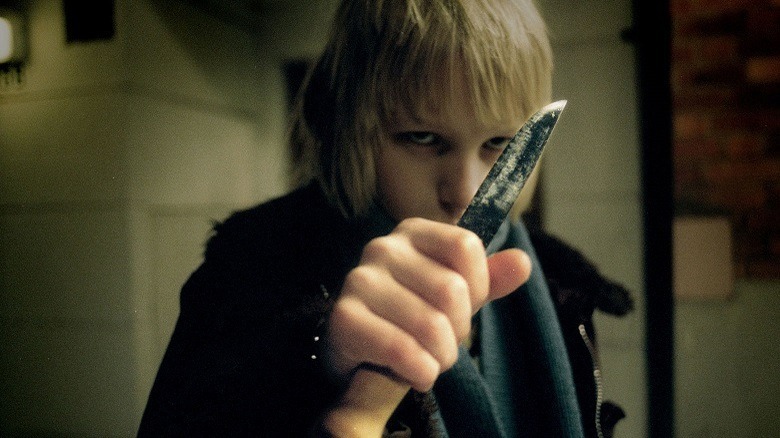
Adapted from the best-selling book by John Ajvide Lindqvist, "Let the Right One In" is a Nordic horror-noir set in Stockholm in the early '80s. Oskar, 12, frequently the victim of school bullies, is desperate for revenge. He befriends his neighbor Eli, a girl seemingly his own age, and soon learns the secret of her and her mysterious guardian, Håkan.
The title, inspired by a Morrissey song, is deliberately ambiguous. On one hand, it refers to the legend that a vampire may not enter a house until invited inside. On the other, it suggests that Oskar is one of the few people that Eli can let in on her deadly secret.
"Let the Right One In" is beautifully shot and genuinely touching. There's a scene in which Eli demonstrates to Oskar exactly what happens if she enters a private residence uninvited, and it brings an ugly and painful level of detail to an often-ignored detail of vampiric lore. The friendship between Eli and Oskar is charming and genuine, heightened by the incredible performances by the two leads. It's a friendship doomed to only ever end one way, but this inevitability brings a level of unexpected poignancy to the film. Stockholm has never looked as beautiful, all wide vistas of snow-covered urban sprawls -- an alien setting for the more horrific scenes, giving them an unusual macabre beauty. You should let this one in.
A Girl Walks Home Alone At Night: Iranian Noir
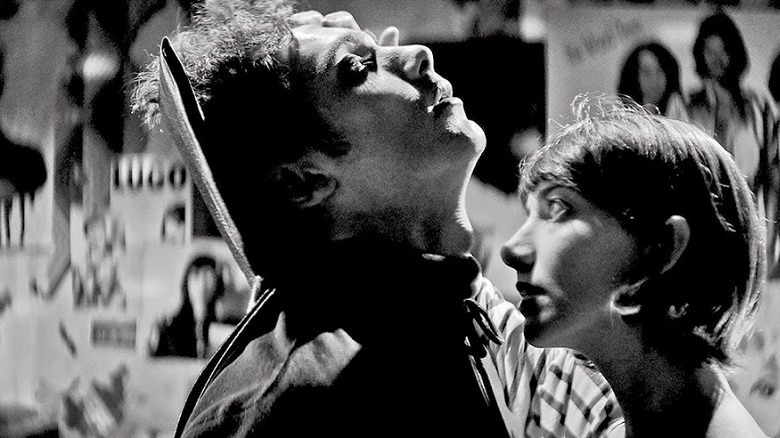
It's not practical for vampires to travel as bats all the time -- it's a terrible strain on the arms -- so they're not averse to other means of transportation. A horse drawn carriage driven by a human familiar; a coffin in the hold of the good ship Demeter; a skateboard.
Set in a ghost town in Iran, "A Girl Walks Home Alone at Night" centers around Arash, a young man harassed by a local pimp owed money by Arash's father. Arash encounters -- and befriends -- a mysterious and enigmatic chador-clad skateboarding girl who may or may not be responsible for several deaths in the area.
Plot-wise, "A Girl Walks Home Alone at Night" treads a similar path as "Let the Right One In," but it's interesting to see the story transposed into an altogether different culture and political climate, with any element of romanticizing the vampire removed. The Girl (all she is even known as, even in the credits) is as far from the stereotypical angst-ridden Nosferatu as you can get; she's a protagonist, not a victim, and uses her powers to do what she wants, free from harm. Filming the movie in black and white was a bold choice, but a wise one -- it gives the imagery a sense of timelessness, as well as making it resemble an animated graphic novel -- and marks a striking debut for writer-director-producer Ana Lily Amirpour.
What We Do In The Shadows: OnlyFangs
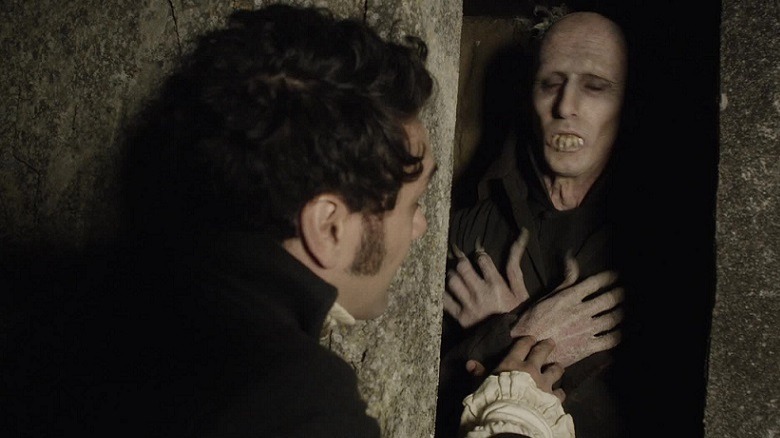
Vampires are tricky to get right in comedy, as evidenced by Leslie Nielsen's "Dracula: Dead and Loving it," a movie so bad most viewers would prefer to be staked through the heart than watch it. The basic concept of vampires is so daft that it's kind of a spoof of itself, almost beyond parody. Why "What We Do in the Shadows" works so well, however, is that it takes that pomposity and the inherent silliness to vampires and treats it with a completely deadpan attitude, making it hilarious.
"What We Do in the Shadows" is presented as a fly-on-the-wall documentary covering the everyday (or every night?) lives of vampire flatmates in Wellington, the capital of New Zealand. It follows the trials and tribulations (and accidental incinerations) of our four hapless night-dwellers, showing the mundane realities of immortality. The resident vampires are, despite their longevity, stupidly naïve about modern life, and it's from various fish-out-of-water scenarios that some delightful humor arises. It's all very well being 2,000 years old and able to transform into a bat at will, but you still need to put the bins out.
"What We Do in the Shadows" would go on to inspire an equally brilliant television series of the same name, as well as "Wellington Paranormal," a mockumentary-style production featuring the New Zealand police officers responsible for policing the supernatural.
The Transfiguration: Stylish, Poignant, Painful
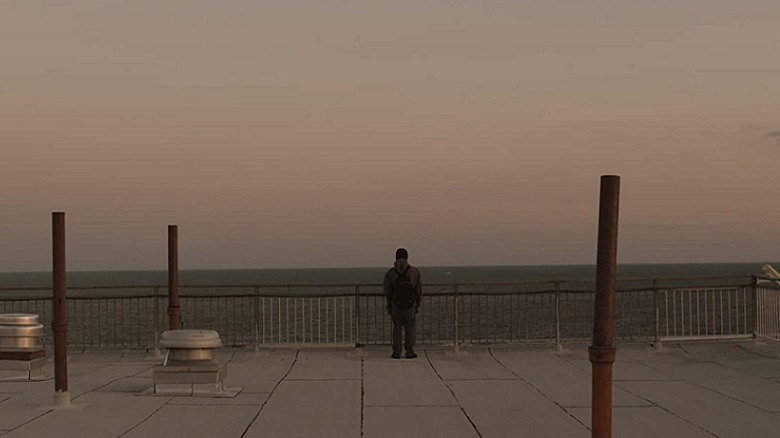
"The Transfiguration" resembles a modern retelling of "Martin," but ends up being much more. It's a bleak tale of obsession, but also an interesting take on the vampire myth, especially how vampires are interpreted and portrayed in modern culture.
Milo is a 14-year-old boy who believes that he is a vampire. He has killed before, and has constructed a journal full of rules that he believes that he, as a member of the undead, must follow. He befriends a girl, Sophie, which puts her in jeopardy: Milo's own rules prevent suicide, but he is increasingly drawn to the girl. This all takes place across a background of urban squalor and gang warfare, and it almost feels as though Milo's misguided belief is all that keeps him going; being a vampire is the protective ward that shields him from the world, and is the only way he can feel important.
It's certainly the most realistic and grounded of any of the films here -- Milo's misguided beliefs are never portrayed as being anything but -- but is as worthy as any of the other entries on the list. Whether he has supernatural qualities or not, Milo is a vampire. "The Transfiguration" ends in tragedy, the only way the story realistically can, but there is redemption, of a sort. All in all, this is a hidden independent gem, and deserving of its position amongst the vampiric pantheon.
Read this next: The Best Vampire Movies You've Probably Never Seen
The post The 12 best vampire movies of all time appeared first on /Film.
from /Film https://ift.tt/2WdTQDP
No comments: